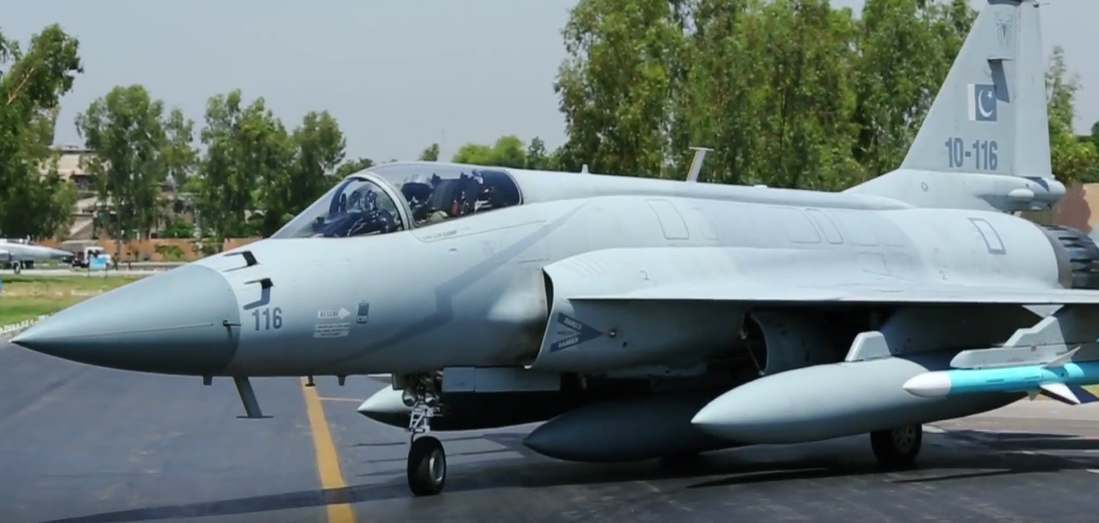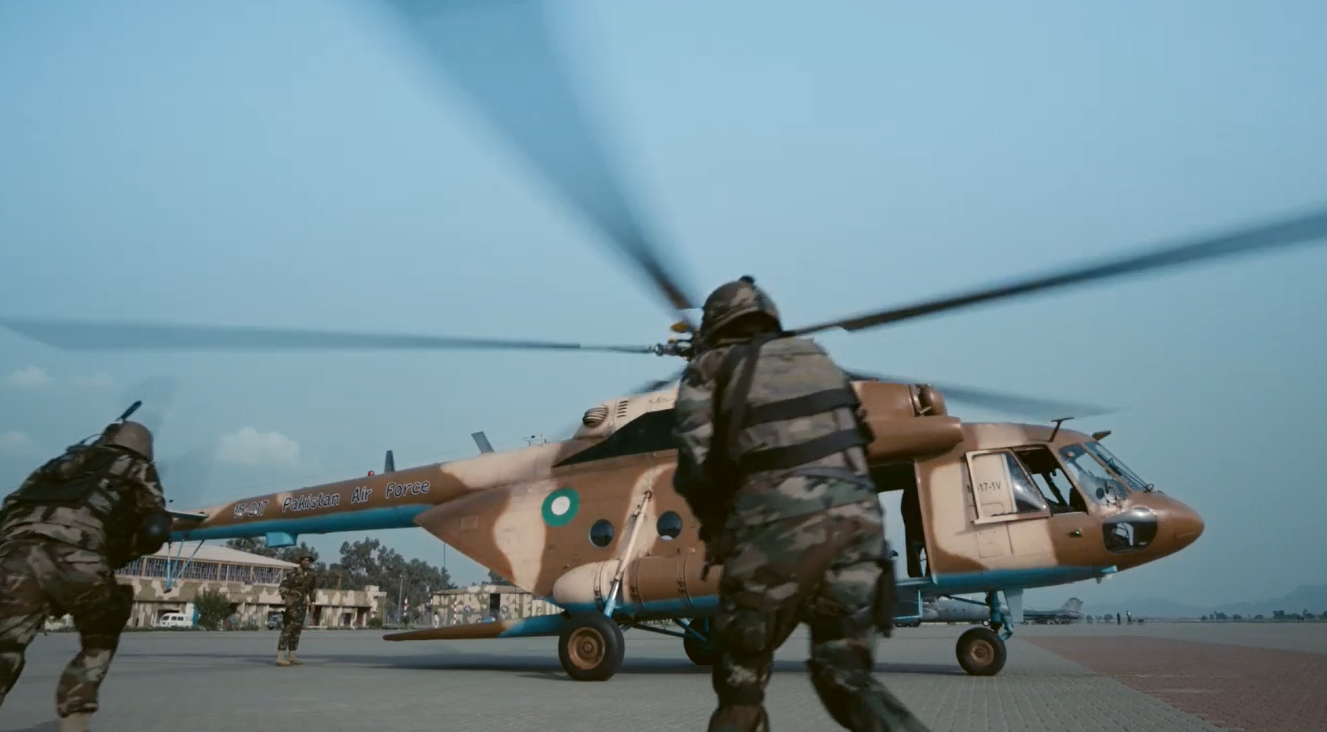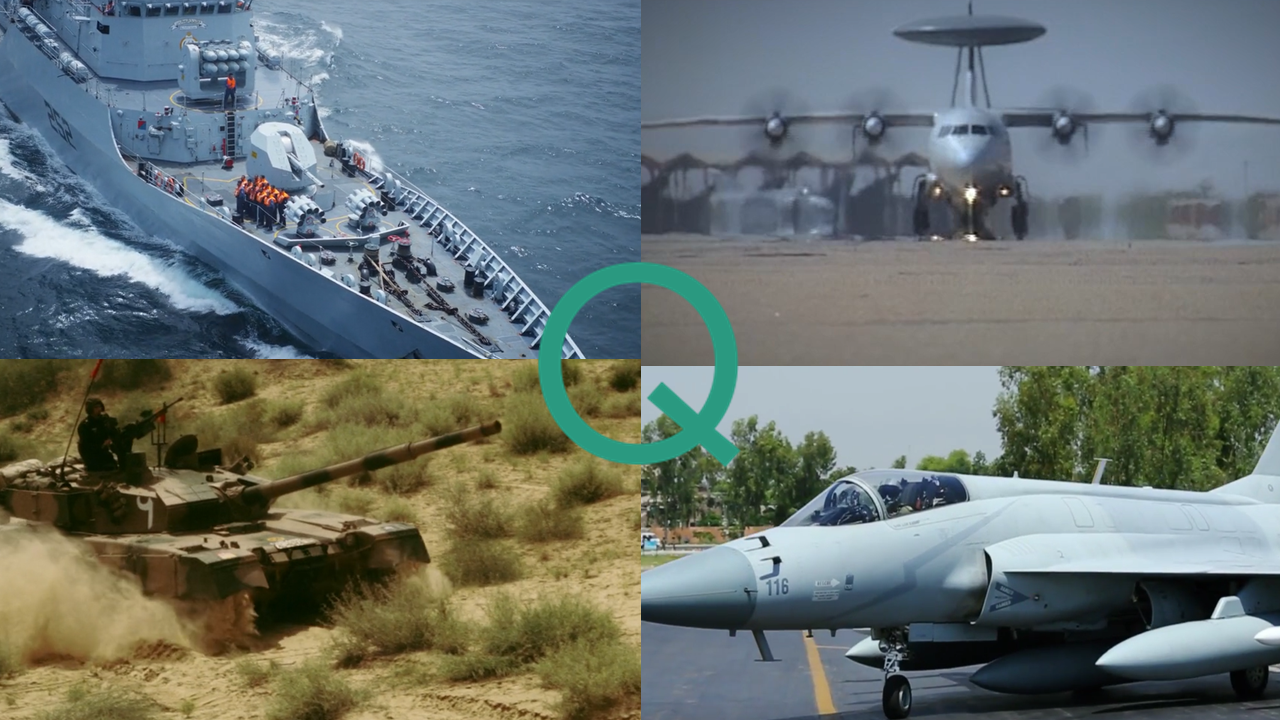2444Views 6Comments

This Week in Review: Pakistan’s drive to export military aircraft
Every weekend, Quwa will close the week’s news with a review and analysis with the aim to tie together several topics into broader themes. It is an opportunity to reflect upon and discuss issues in a way where key trends are identified and individual news topics are connected into a “bigger picture.”
Pakistan’s drive to export military aircraft
Over the past week, the Pakistan Air Force (PAF) has made moves to market the JF-17 Thunder multi-role fighter and Super Mushshak trainer, both of which are produced at Pakistan Aeronautical Complex (PAC).
An explicit offer was made to the Kuwait Air Force by the PAF Chief of Air Staff – Air Chief Marshal (ACM) Sohail Aman (see: Pakistan offers JF-17 & Super Mushshak to Kuwait).
Shortly After, ACM Aman’s official visit to Sri Lanka – which roughly coincided with the latter committing to seek eight to twelve new fighter aircraft –suggested that Pakistan could be reviving its JF-17 pitch to the Sri Lankan Air Force (SLAF) (see: Sri Lanka presses ahead with new fighter plans).
An earlier article on Quwa discussed the JF-17’s market potential, and raised the question of whether it ought to be of primary concern considering the Thunder’s core objective is to meet the needs of the PAF (see: Does the JF-17’s market potential matter?). This week’s article is a slightly different topic, one that will aim to provide an understanding of how Pakistan’s commercial defence activities, specifically in the area of military aircraft, are executed.
From the onset, informed and astute observers will notice that the PAF plays a significant – if not leading – role in marketing PAC’s product line (i.e. JF-17 and Super Mushshak). For those viewing the situation through the lenses of the Western defence industry, this approach might seem peculiar. For example, in the U.S., commercial activities are largely spearheaded by the lead vendors themselves, such as Boeing and Lockheed Martin. It is not common to see U.S. Air Force officials approach their counterparts and make an opening offer for the F-16 and F-15. Yes, this could occur in some cases, but these tend to be as a result of a prior request from the recipient country for those fighters. A USAF offer is rarely unsolicited.
The PAF’s ‘hands on’ role can be explained in huge part by the reality that PAC is essentially an entity of the PAF itself. The original intent and primary function of PAC is to support the PAF by servicing the latter’s aircraft (via comprehensive maintenance, repair and overhaul or MRO facilities) and, in recent years, produce combat aircraft for the PAF fighter fleet. It is not a commercial entity.
While it is not a commercial entity, it appears that Pakistan’s defence establishment is intent on exporting JF-17s. The primary rationale could stem from the desire to add to the foreign exchange reservoir, i.e. add to Pakistan’s stock of U.S. dollars. Fighter exports, even at the break-even point, still generate high-value jobs for the exporter, and over the long-term, recurring MRO as well as potential upgrade contracts. In addition, selling JF-17s confers Pakistan with an opportunity to vertically integrate its other vendors, such as Global Industrial & Defence Solutions (GIDS). For example, along with the JF-17, Pakistan could also sell air-to-ground munitions produced by GIDS, such as the Range Extension Kit (REK) or simply even general purpose bombs (i.e. Mk-82, Mk-83 and Mk-84).
With an increasingly stressed fiscal budget (which has and will continue to have trouble funding the armed forces’ needs), generating export profits may also be seen as a method plugin fiscal budget gaps. There is also the scaling. Through exports, the development costs of the JF-17 and other programs (e.g. a precision-guided air-to-ground munition) could be distributed over a larger number of individual goods.
There are drawbacks to this approach. For example, PAC’s product portfolio will largely – if not entirely – be comprised of goods designed, developed and produced primarily for the PAF. In other words, PAC will not be likely to produce goods that the PAF is not acquiring for itself, even though those particular goods may be gaining traction in the market.
For example, lightweight turboprops such as the A-29 Super Tucano have made clear gains in the market as both trainers and lightweight attackers, especially in asymmetrical warfare environments, such as counterinsurgency (COIN) operations.
The PAF has not signalled any intent to acquire such aircraft (e.g. the Turkish Aerospace Industries Hürkuş), and as such, it is essentially certain that PAC will not produce this aircraft or even its parts. This is an interesting issue considering that these COIN aircraft are being positioned as a low-cost alternative to lightweight jet fighters, such as the JF-17.
The combat aircraft market is being heavily split between expensive high-performance fighters and low-cost attackers, the latter (e.g. A-29) being marketed to air forces with limited to non-existent anti-air warfare (AAW) needs. These countries include the likes of Afghanistan, Angola, Senegal and Mauritania. Generally speaking, the A-29 and its contemporaries are being pitched to the same markets the PAF is seeking to win over as JF-17 customers.
On the other hand, PAC’s linkage to the PAF confers the JF-17 with several advantages, which may seem unconventional on the surface, but make considerable sense on their own terms. For example, the PAF could package an offer of the JF-17 with greater access to its own training facilities and programs. Smaller air forces, especially those with limited access and exposure to modern air warfare training facilities, air exercises (such as Red Flag), and a dearth of experienced advisors and personnel, could see genuine value in the PAF’s value proposition.
Nigeria has a series of COIN issues as its primary national defence concerns. With the JF-17, not only is Nigeria receiving a fighter aircraft with precision air-to-ground strike capability, but it could also receive the support of experienced PAF advisors, access to frequently iterated training programs and exercises in Pakistan, and in time, the programs on offer by the Airpower Centre of Excellence (ACE). In such cases, the PAF could successfully argue that it is not just offering a product, but an entire end-to-end solution.
It will be of interest to see if PAC engages in industry partnerships with overseas vendors as a means to both meet the PAF’s operational needs and its fiscal aims. In other words, commercial offsets. For example, could the PAF potentially select a medium-altitude long-endurance (MALE) unmanned aerial vehicle (UAV) from abroad, but require that PAC be plugged into that MALE UAV’s global supply chain? This seems to have been one of TAI’s offers to Pakistan (on the condition that it select the Anka UAV).



6 Comments
by Khalid Riaz
There is also an issue about how efficient PAC is compared to a private sector aircraft manufacturer. I understand that no other airforce manufactures its own aircraft. The aircraft manufacturers operate on commercial lines, with decisions on product mix, offsets etc taken on the basis of commercial considerations. This way, the private sector investments can be brought into defense manufacturing.
by Shershahsuri
A new smokeless, powerful and speedy engine is necessary to boost the demand of JFT in the international market.
by Shershahsuri
Mr.Bilal, also write something on South Sea China crisis in the conflict analysis of your site.
by SP
Mr Bilal I think that you should do an artcle on f22 raptor. This aircraft is a trend setter and a bridge to the next generation of unmanned aircrafts. The technology found in it will become more common with other aircrafts incorporating the new technology and new manufacturing techniques. Newer aircrafts are becoming increasingly net centric, and the f22 takes that to a new level. F22 may not be directly related to Pakistan but gives us an idea of where future aircraft designs are headed.
by Sami Shahid
Pakistan should first promote JF-17
by sufi
PAC is bloated….i read somewhere that its the biggest complex of this kind in the world ( around 10,000 workers ) and what does it produce ?…………..like other institutions in pakistan its goal seems to be the creation of useless jobs.